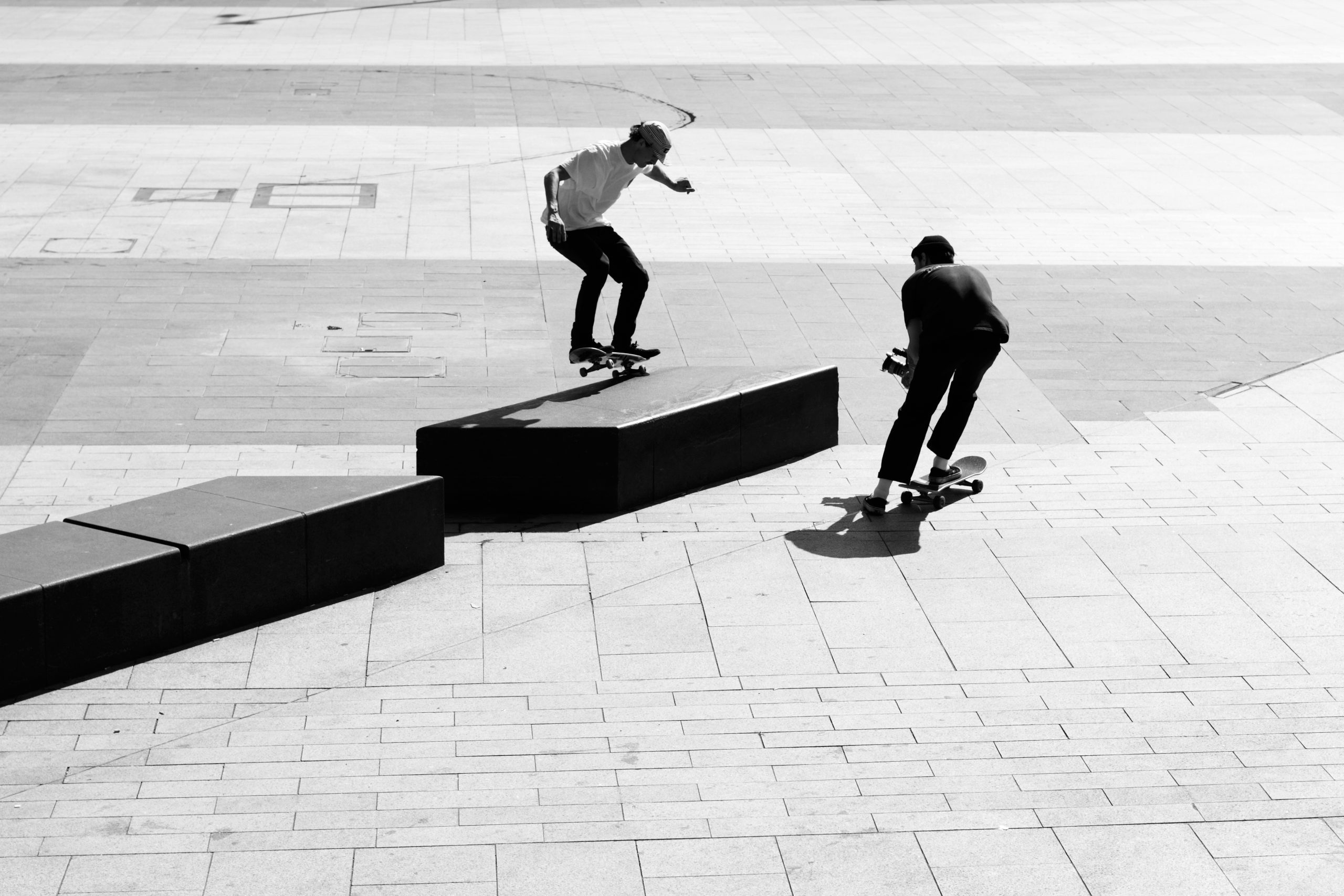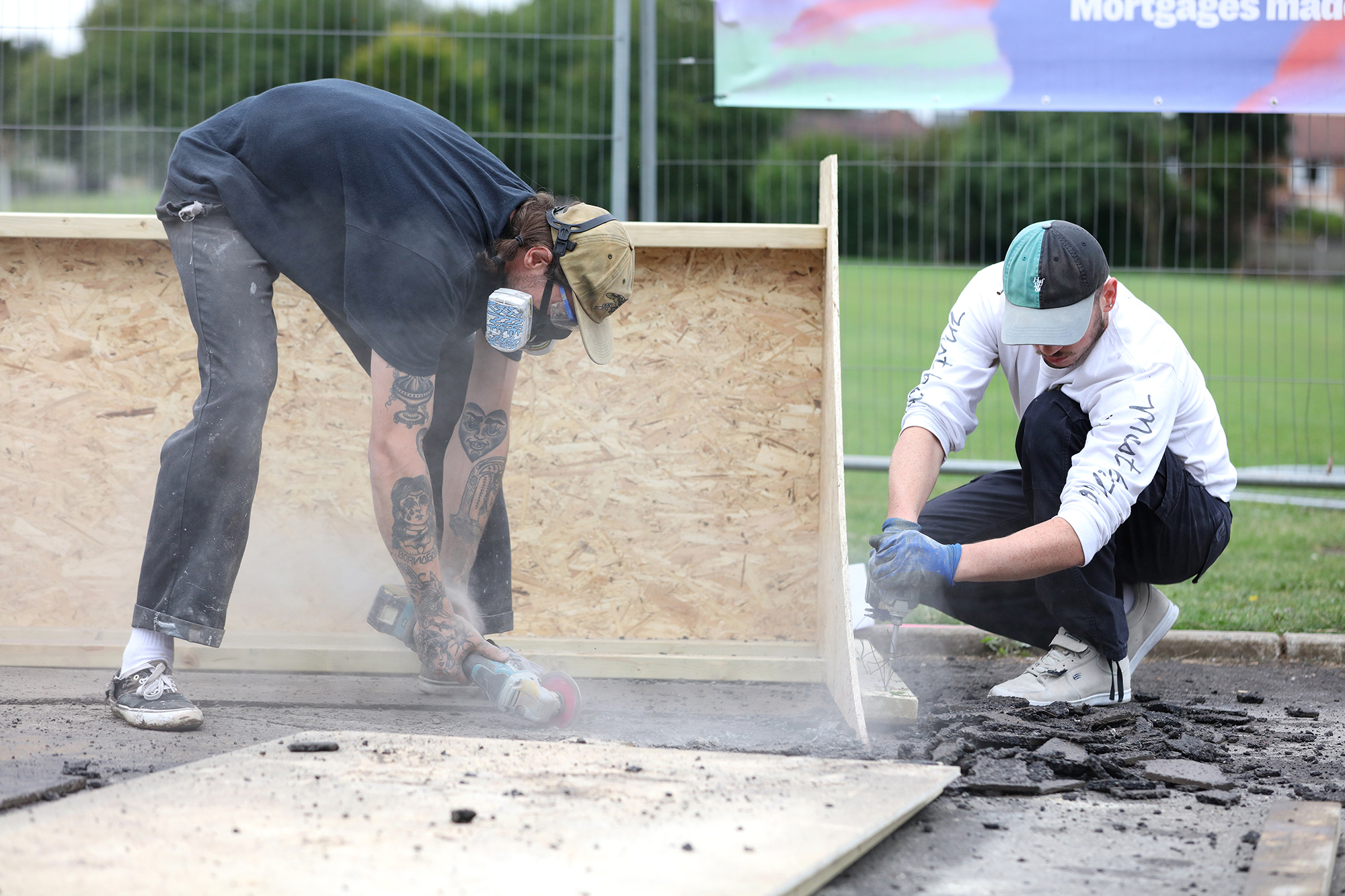
Skateboarding is one of the most controversial topics in urban planning circles. This year’s Urban Studies Conference in Tampere was launched with a pre-excursion to the Hiedanranta neighbourhood with an emphasis on skatepark development. The Kenneli DIY skatepark is a magnet for young people searching for a community, and the initiators have hired unemployed youth that are interested in skateboarding, thus contributing to the social life of Hiedanranta. Nevertheless, both planners and city dwellers are discussing the benefits and harms of developing skateboarding in urban environments
There are many factors that define the value of skateparks, and youth development is one of the most substantial factors. Skateparks have a long history of creating and giving a sense of community to those in need. According to a presentation given by Tom Critchley and Chris Lawton at Tampere Urban Studies Conference, DIY skate spaces present a great cost-efficiency ratio that is seen through the ability to overcome development challenges even in the context of limited resources and funding. Insurgent spatial practices, such as DIY urbanism that allow the development of skateparks, can help prevent criminalisation of at-risk youth, as providing a better alternative to the young people leads to a reduced risk of violent crime. One example of a participatory non-profit organisation that promotes skateboarding as a means of sustainable youth development is the Concrete Jungle Foundation. The organisation aims to respond to the current societal youth-related issues, primarily in the Global South (including sites in Jamaica, Angola and Morocco), such as unemployment, homelessness and crime, by building skateparks and creating a community that would keep young people connected to each other and provide a sense of belonging. In more affluent environments, such as the UK and Finland, where there are abundant opportunities to engage in non-regulated sports, participatory communities naturally emerge and provide needed support to the unsupervised youth that can ‘fall through the gaps’ of mainstream sports, culture and employability offers, as seen in cities such as Tampere and Nottingham.
However, a monumental challenge for the skateboarding community comes from resistance or opposition from governments. Local urban planning companies spend significant amounts of money on hostile architecture that would keep the skaters in their “allocated” spots, which are usually placed at inconvenient and neglected locations that would keep skateboarders off the central streets and squares. “Skatestoppers”, the big metal staples, are aiming to prevent skaters from using urban architecture, disturbing the aesthetic of the city far more than any skateboarders could through the use of public spaces not specified for skating. The accessibility of skateparks should not be a political matter but a matter of the social inclusion of groups at risk. Therefore, forcible intervention in city structure to put skaters on the margins does not create a better urban environment but rather makes it less livable and enjoyable for everyone.

Skateboarders tend to bend cities to their needs, creating a better urban environment for all the members of society. The basic stereotype surrounding skateparks is that they become a hotbed of homeless, drug dealers and criminals as soon as they stop being closely supervised. However, despite the harmful assumption of skateboarders being destructive towards the cities, there is actually a great benefit in skateboarding. Skateboarding is a part of the healthy dynamics of any city that creates a safer and more diverse urban structure. DIY urbanism, which includes skateparks, is a bottom-up practice that responds to current issues without involving multiple-level approval from the government, making it a more efficient way of bringing change to the local communities. One example of how skateboarding transforms cities and makes them safer is LOVE Park in Philadelphia. At the beginning of the 1980s, LOVE park became a spot of attraction for drug deals and violent crime, yet as soon as skateboarders started appropriating the park for their own use, it began revitalising with great success. Skateboarders found use in the park’s benches, staircases and handrails, bringing the public to previously avoided “non-spaces”. Despite the anti-establishment spirit of skateboarding, their development in LOVE Park allowed the reconsolidation and revitalisation of otherwise violent and unusable spaces.
A more recent example is provided by Sheffield in the UK, a post-industrial city currently undergoing significant regeneration investment, as a beneficiary of the British Government’s ‘Levelling Up Fund’ (LUF). Prior to Sheffield’s receipt of almost £20 million from the LUF, a small experiment was applied to the previously under-used and problematic pedestrian thoroughfare of Exchange Street. In autumn 2020, a partnership including a private sector developer, Sheffield City Council and Skateboard GB, the National Governing Body for skateboarding in the UK, installed several ‘skate friendly’ features in Exchange Street as temporary or ‘meanwhile’ spatial interventions. Recent research by Skateboard GB (spring 2022), including interviews with local businesses and South Yorkshire Police, found that observed incidences of both crime and anti-social behaviour declined markedly when skaters were present in the space; suggesting that skateboarding displaced or diverted crime and made other users feel safer. One of the businesses, an independent gallery, noted that the skaters’ tendency to film each others’ skateboarding provided a strong deterrent for the drug transactions and substance misuse that had previously been associated with the space. Therefore, the premise of the destructive influence of skateboarders on the urban environment is only a stereotype, and in reality, it’s quite the opposite.
Thus, despite the complicated relationship with the governmental structures, skateboarding is still inherent to any urban environment, and the only two options remain: being shunned and marginalised, or being cherished and taken advantage of. Skateboarding contributes to the fluidity of the city and creates a live dynamic between mundane architectural forms and an active mode of transportation and lifestyle. The troublemaker reputation of skateboarding is rarely ever justified, as it contributes way more to youth development in terms of physical activity, socialisation and independent transportation, along with making cities safer and livelier.
Oxana Ivanova
Oxana is studying in the technology stream of the Sustainable Urban Development bachelor’s program at Tampere University. She is most interested in the use of public spaces and the development of city infrastructure. In her free time, Oxana likes to climb things and skateboard.

Bibliography:
‘4Cities Master Thesis l Towards Skateboard Urbanism? By Julien Revelard – Issuu’. https://issuu.com/julienmoliera/docs/mathesis_4cities_moliera_julien_fin.
Colville-Andersen, M. (2018) ‘The Life-Sized City Urbanism Podcast: Designing Skateboard-Friendly Cities’. https://podcasts.apple.com/kz/podcast/designing-skateboard-friendly-cities-ep02/id1437367607?i=1000426649246.
Concrete Jungle Foundation (2022) ‘About Us | Concrete Jungle Foundation’. https://concretejunglefoundation.org/about-us.html.
Critchley, T. (2020) ‘DIY Skate Spots and Guerrilla Architecture: Challenging “Non-Places” in Greater London’. Confusion Magazine: International Skateboarding Magazine. https://www.confuzine.com/2020/09/27/diy-skate-spots-and-guerrilla-architecture-challenging-non-places-in-greater-london/.
Critchley, T. & Lawton, C. (2022) ‘DIY Skate spaces and Youth Development – Practice-based cases from the UK and Jamaica’.
Howell, O. (2005) ‘The “Creative Class” and the Gentrifying City’. Journal of Architectural Education 59, no. 2: 32–42. https://doi.org/10.1111/j.1531-314X.2005.00014.x.
Kaupunkitutkimuksen päivät (2022) ‘Sustainability and Insurgent Spatial Practices’. http://www.kaupunkitutkimuksenpaivat.net/esitelmakutsu-call-for-papers/sustainability-and-insurgent-spatial-practices/.
Skateboard GB (2022) ‘Sheffield leading the way as skateboarding helps to make public spaces safer’. https://skateboardgb.org/news/2022/7/4/sheffield-leading-the-way-as-skateboarding-helps-to-make-public-spaces-safer
Tampereen kaupunki (2018) ‘Uusi Skeittirata Avattiin Hiedanrannan Skeittihallin Sisäpihalle’. https://www.tampere.fi/tampereen-kaupunki/ajankohtaista/tiedotteet/2018/10/04102018_2.html.
‘The Skateboarding Problem – Public Skatepark Development Guide’. https://publicskateparkguide.org/vision/the-skateboarding-problem/.
Timo, H. (2018) ‘The Power of DIY Urbanism: How a Group of Skateboarders Changed the City’. From Rurban to Urban. https://urbanfinland.com/2018/07/25/the-power-of-diy-urbanism-how-a-group-of-skateboarders-changed-the-city/.
